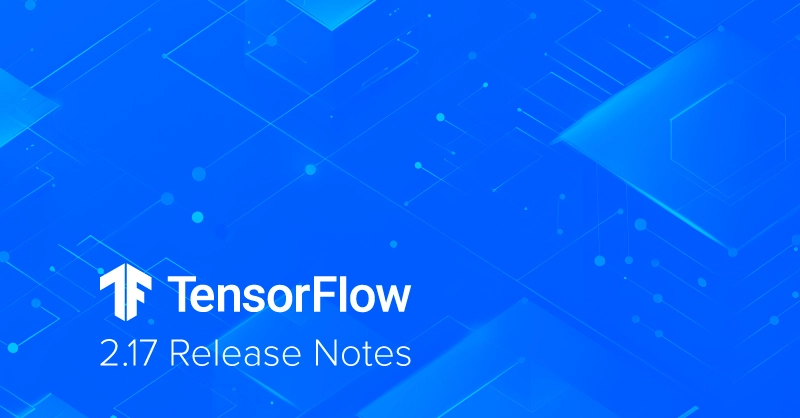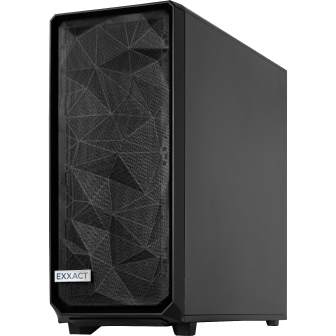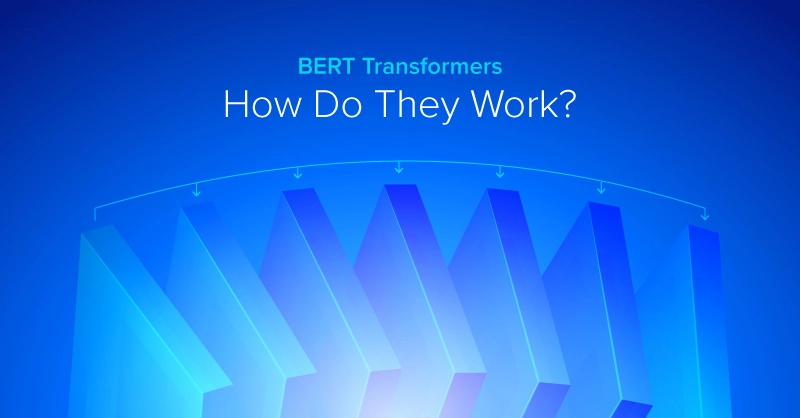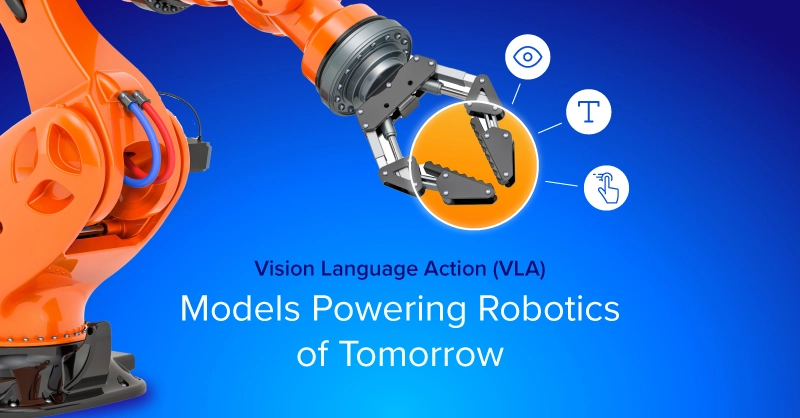
TensorFlow 2.17 has been released! Highlights of this release (and 2.16) include CUDA update, upcoming Numpy 2.0, and more. For the full release notes, please visit TensorFlow’s GitHub here.
TensorFlow 2.17 Changes
CUDA Update
TensorFlow binary distributions now ship with dedicated CUDA kernels for GPUs with a compute capability of 8.9. This improves the performance on the popular Ada-Generation GPUs like NVIDIA RTX 40**, L4 and L40.
To keep Python wheel sizes in check, TensorFlow Team decided to no longer ship CUDA kernels for compute capability 5.0. That means the oldest NVIDIA GPU generation supported by the precompiled Python packages is now the Pascal generation (compute capability 6.0). For Maxwell support, TensorFlow Team either recommends sticking with TensorFlow version 2.16, or compiling TensorFlow from source. The latter will be possible as long as the used CUDA version still supports Maxwell GPUs.
Numpy 2.0
The upcoming TensorFlow 2.18 release will include support for Numpy 2.0. This may break some edge cases of TensorFlow API usage.
Drop TensorRT support
Starting with TensorFlow 2.18, support for TensorRT will be dropped. TensorFlow 2.17 will be the last version to include it.
Bug Fixed and Other TensorFlow 2.17 Changes
- tf.lite
- Quantization for FullyConnected layer is switched from per-tensor to per-channel scales for dynamic range quantization use case (float32 inputs / outputs and int8 weights). The change enables new quantization schema globally in the converter and inference engine. The new behaviour can be disabled via experimental flag converter._experimental_disable_per_channel_quantization_for_dense_layers = True.
- C API: The experimental TfLiteRegistrationExternal type has been renamed as TfLiteOperator, and likewise for the corresponding API functions.
- The Python TF Lite Interpreter bindings now have an option experimental_default_delegate_latest_features to enable all default delegate features.
- Flatbuffer version update:GetTemporaryPointer() bug fixed.
- tf.data
- Add wait to tf.data.Dataset.load. If True, for snapshots written with distributed_save, it reads the snapshot while it is being written. For snapshots written with regular save, it waits for the snapshot until it's finished. The default is False for backward compatibility. Users of distributed_save are recommended to set it to True.
- tf.tpu.experimental.embedding.TPUEmbeddingV2
- Add compute_sparse_core_stats for sparse core users to profile the data with this API to get the max_ids and max_unique_ids. These numbers will be needed to configure the sparse core embedding mid level api.
- Remove the preprocess_features method since that's no longer needed.
Keras 3.5 Changes
Note: Release updates on the new multi-backend Keras will be published on keras.io, starting with Keras 3.0. For more information, please see https://keras.io/keras_3/.
Keras 3.0 Major Updates:
- Keras can now be run on top of JAX, PyTorch, TensorFlow, and even NumPy (note that the NumPy backend is inference-only).
- New low-level keras.ops API for building cross-framework components.
- New large-scale model distribution keras.distribution based on JAX.
- New stateless API for layers, models, optimizers, and metrics.
Keras 3.5 Latest Changes
- Add integration with the Hugging Face Hub. You can now save models to Hugging Face Hub directly from keras.Model.save() and load .keras models directly from Hugging Face Hub with keras.saving.load_model().
- Ensure compatibility with NumPy 2.0.
- Add keras.optimizers.Lamb optimizer.
- Improve keras.distribution API support for very large models.
- Add keras.ops.associative_scan op.
- Add keras.ops.searchsorted op.
- Add keras.utils.PyDataset.on_epoch_begin() method.
- Add data_format argument to keras.layers.ZeroPadding1D layer.
- Bug fixes and performance improvements.

We're Here to Deliver the Tools to Power Your Research
With access to the highest performing hardware, at Exxact, we can offer the platform optimized for your deployment, budget, and desired performance so you can make an impact with your research!
Talk to an Engineer Today
TensorFlow 2.17 Release Notes
TensorFlow 2.17 has been released! Highlights of this release (and 2.16) include CUDA update, upcoming Numpy 2.0, and more. For the full release notes, please visit TensorFlow’s GitHub here.
TensorFlow 2.17 Changes
CUDA Update
TensorFlow binary distributions now ship with dedicated CUDA kernels for GPUs with a compute capability of 8.9. This improves the performance on the popular Ada-Generation GPUs like NVIDIA RTX 40**, L4 and L40.
To keep Python wheel sizes in check, TensorFlow Team decided to no longer ship CUDA kernels for compute capability 5.0. That means the oldest NVIDIA GPU generation supported by the precompiled Python packages is now the Pascal generation (compute capability 6.0). For Maxwell support, TensorFlow Team either recommends sticking with TensorFlow version 2.16, or compiling TensorFlow from source. The latter will be possible as long as the used CUDA version still supports Maxwell GPUs.
Numpy 2.0
The upcoming TensorFlow 2.18 release will include support for Numpy 2.0. This may break some edge cases of TensorFlow API usage.
Drop TensorRT support
Starting with TensorFlow 2.18, support for TensorRT will be dropped. TensorFlow 2.17 will be the last version to include it.
Bug Fixed and Other TensorFlow 2.17 Changes
- tf.lite
- Quantization for FullyConnected layer is switched from per-tensor to per-channel scales for dynamic range quantization use case (float32 inputs / outputs and int8 weights). The change enables new quantization schema globally in the converter and inference engine. The new behaviour can be disabled via experimental flag converter._experimental_disable_per_channel_quantization_for_dense_layers = True.
- C API: The experimental TfLiteRegistrationExternal type has been renamed as TfLiteOperator, and likewise for the corresponding API functions.
- The Python TF Lite Interpreter bindings now have an option experimental_default_delegate_latest_features to enable all default delegate features.
- Flatbuffer version update:GetTemporaryPointer() bug fixed.
- tf.data
- Add wait to tf.data.Dataset.load. If True, for snapshots written with distributed_save, it reads the snapshot while it is being written. For snapshots written with regular save, it waits for the snapshot until it's finished. The default is False for backward compatibility. Users of distributed_save are recommended to set it to True.
- tf.tpu.experimental.embedding.TPUEmbeddingV2
- Add compute_sparse_core_stats for sparse core users to profile the data with this API to get the max_ids and max_unique_ids. These numbers will be needed to configure the sparse core embedding mid level api.
- Remove the preprocess_features method since that's no longer needed.
Keras 3.5 Changes
Note: Release updates on the new multi-backend Keras will be published on keras.io, starting with Keras 3.0. For more information, please see https://keras.io/keras_3/.
Keras 3.0 Major Updates:
- Keras can now be run on top of JAX, PyTorch, TensorFlow, and even NumPy (note that the NumPy backend is inference-only).
- New low-level keras.ops API for building cross-framework components.
- New large-scale model distribution keras.distribution based on JAX.
- New stateless API for layers, models, optimizers, and metrics.
Keras 3.5 Latest Changes
- Add integration with the Hugging Face Hub. You can now save models to Hugging Face Hub directly from keras.Model.save() and load .keras models directly from Hugging Face Hub with keras.saving.load_model().
- Ensure compatibility with NumPy 2.0.
- Add keras.optimizers.Lamb optimizer.
- Improve keras.distribution API support for very large models.
- Add keras.ops.associative_scan op.
- Add keras.ops.searchsorted op.
- Add keras.utils.PyDataset.on_epoch_begin() method.
- Add data_format argument to keras.layers.ZeroPadding1D layer.
- Bug fixes and performance improvements.

We're Here to Deliver the Tools to Power Your Research
With access to the highest performing hardware, at Exxact, we can offer the platform optimized for your deployment, budget, and desired performance so you can make an impact with your research!
Talk to an Engineer Today



.jpg?format=webp)